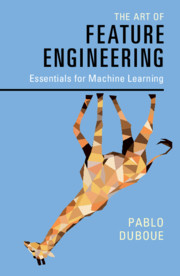Refine listing
Actions for selected content:
9096 results in Communications, Signal Processing and Information Theory
9 - Other Auctions
-
- Book:
- Auction Theory for Computer Networks
- Published online:
- 15 May 2020
- Print publication:
- 11 June 2020, pp 215-235
-
- Chapter
- Export citation
7 - Combinatorial Auction
-
- Book:
- Auction Theory for Computer Networks
- Published online:
- 15 May 2020
- Print publication:
- 11 June 2020, pp 158-188
-
- Chapter
- Export citation
10 - Optimal Auction Using Machine Learning
-
- Book:
- Auction Theory for Computer Networks
- Published online:
- 15 May 2020
- Print publication:
- 11 June 2020, pp 236-259
-
- Chapter
- Export citation
8 - Double-Sided Auction
-
- Book:
- Auction Theory for Computer Networks
- Published online:
- 15 May 2020
- Print publication:
- 11 June 2020, pp 189-214
-
- Chapter
- Export citation
Contents
-
- Book:
- Auction Theory for Computer Networks
- Published online:
- 15 May 2020
- Print publication:
- 11 June 2020, pp vii-x
-
- Chapter
- Export citation

The Art of Feature Engineering
- Essentials for Machine Learning
-
- Published online:
- 29 May 2020
- Print publication:
- 25 June 2020

Auction Theory for Computer Networks
-
- Published online:
- 15 May 2020
- Print publication:
- 11 June 2020
8 - Performance Improvement for Ambient Backscatter Communication Systems
- from Part III - Challenges, Approaches, and Emerging Topics
-
- Book:
- Ambient Backscatter Communication Networks
- Published online:
- 24 April 2020
- Print publication:
- 30 April 2020, pp 221-244
-
- Chapter
- Export citation
2 - Fundamentals of Ambient Backscatter Communication
- from Part I - Fundamentals of Ambient Backscatter Communication
-
- Book:
- Ambient Backscatter Communication Networks
- Published online:
- 24 April 2020
- Print publication:
- 30 April 2020, pp 33-61
-
- Chapter
- Export citation
Preface
-
- Book:
- Ambient Backscatter Communication Networks
- Published online:
- 24 April 2020
- Print publication:
- 30 April 2020, pp xiii-xviii
-
- Chapter
- Export citation
Frontmatter
-
- Book:
- Ambient Backscatter Communication Networks
- Published online:
- 24 April 2020
- Print publication:
- 30 April 2020, pp i-iv
-
- Chapter
- Export citation
10 - Open Issues and Emerging Research Topics
- from Part III - Challenges, Approaches, and Emerging Topics
-
- Book:
- Ambient Backscatter Communication Networks
- Published online:
- 24 April 2020
- Print publication:
- 30 April 2020, pp 275-294
-
- Chapter
- Export citation
Part II - Architectures, Protocols, and Performance Analysis
-
- Book:
- Ambient Backscatter Communication Networks
- Published online:
- 24 April 2020
- Print publication:
- 30 April 2020, pp 97-98
-
- Chapter
- Export citation
7 - Performance Analysis of Ambient Backscatter
- from Part II - Architectures, Protocols, and Performance Analysis
-
- Book:
- Ambient Backscatter Communication Networks
- Published online:
- 24 April 2020
- Print publication:
- 30 April 2020, pp 193-218
-
- Chapter
- Export citation
Part III - Challenges, Approaches, and Emerging Topics
-
- Book:
- Ambient Backscatter Communication Networks
- Published online:
- 24 April 2020
- Print publication:
- 30 April 2020, pp 219-220
-
- Chapter
- Export citation
Dedication
-
- Book:
- Ambient Backscatter Communication Networks
- Published online:
- 24 April 2020
- Print publication:
- 30 April 2020, pp v-vi
-
- Chapter
- Export citation
Contents
-
- Book:
- Ambient Backscatter Communication Networks
- Published online:
- 24 April 2020
- Print publication:
- 30 April 2020, pp vii-xii
-
- Chapter
- Export citation
1 - Self-Sustaining Wireless Communication Networks
- from Part I - Fundamentals of Ambient Backscatter Communication
-
- Book:
- Ambient Backscatter Communication Networks
- Published online:
- 24 April 2020
- Print publication:
- 30 April 2020, pp 3-32
-
- Chapter
- Export citation
5 - Cognitive Radio Networks with Ambient Backscatter Communication
- from Part II - Architectures, Protocols, and Performance Analysis
-
- Book:
- Ambient Backscatter Communication Networks
- Published online:
- 24 April 2020
- Print publication:
- 30 April 2020, pp 125-156
-
- Chapter
- Export citation
6 - Ambient Backscatter Relay Communication
- from Part II - Architectures, Protocols, and Performance Analysis
-
- Book:
- Ambient Backscatter Communication Networks
- Published online:
- 24 April 2020
- Print publication:
- 30 April 2020, pp 157-192
-
- Chapter
- Export citation
